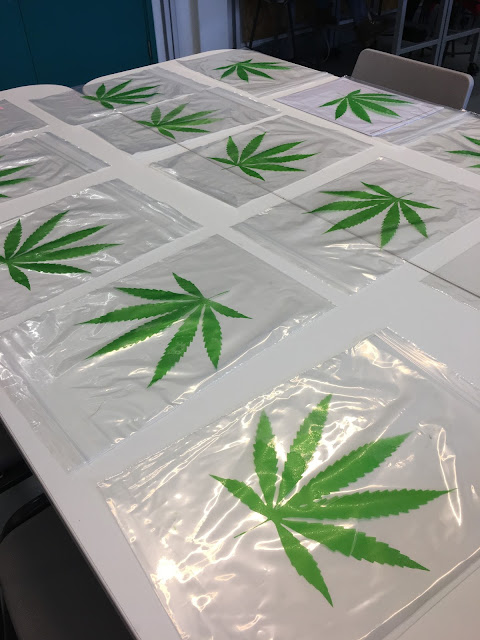I wanted to gain feedback on the plastic bags I produced so I asked my peers a number of questions to help me make a decision on which one would be most appropriate. The first question I asked was which bag is the most durable, I handed each bag out to let my peers get a feel of each polythene bag. It was evident straight away that the vinyl sticker bag was the most durable because the screen printed versions ink flaked when you crumbled up the bag, unlike the vinyl one which kept its shape.
One peer commented saying would the bag have to be durable as they seen the bag as almost a collectors piece that wouldn't be used everyday. Which bag is more aesthetically pleasing? this was the second question I asked and my peers mainly said that the screen printed bag was more pleasing as the vinyl stickers was too vibrant, the vinyl sticker also doesn't let you see through the symbol unlike the screen printed symbol which has a low opacity, therefore you can view a possible cover. The last question I asked was does the bag achieve its aim of catching your eye and possibly attracting a specific target audience. My peers commented that the bag definitely attracts a 'stoner' audience due to the symbol and enquired what my plans for the cover were, if I was to stylise the cover in a way of attracting 'stoners' too. The cover could be either minimal, to help enhance the bags stature or be similar styled, I believe either way will attract an audience.
At this point in the brief, I need to stick to my timeplan to stay organised. Ive made numerous to do lists in notes on my laptop but also rough notes to keep me on track.











































